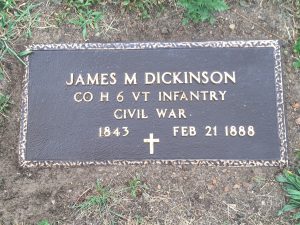 My great-great-great-grandfather, Elijah Dickinson, enlisted in Union Army in 1862. He was joined by both of his brothers, Atwood and James, as well as their sister’s husband, Nelson Cohaskey. The four of them served in Vermont’s 6th Infantry. Elijah died of disease during the war and is buried in Washington, D.C. Nelson also died while serving and is buried in Annapolis, Maryland. Atwood survived the war, moved from Vermont to Iowa, and is buried there. Continue reading Honoring a Civil War veteran
My great-great-great-grandfather, Elijah Dickinson, enlisted in Union Army in 1862. He was joined by both of his brothers, Atwood and James, as well as their sister’s husband, Nelson Cohaskey. The four of them served in Vermont’s 6th Infantry. Elijah died of disease during the war and is buried in Washington, D.C. Nelson also died while serving and is buried in Annapolis, Maryland. Atwood survived the war, moved from Vermont to Iowa, and is buried there. Continue reading Honoring a Civil War veteran
Tag Archives: Critical Analysis
A marriage in the Savoy Chapel
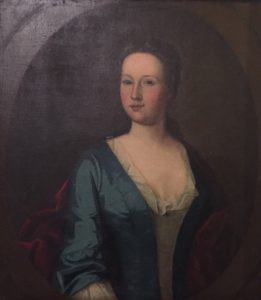
While researching the provenance of a family portrait, I recently revisited the research problem posed by my ancestress Martha (____) (Naden) Mortier, an Englishwoman who came to New York before the American Revolution with her second husband, Abraham Mortier, and her daughters Elizabeth[1] and Ann Naden. As I’ve mentioned before, occasional Google searches on intractable research questions can sometimes yield surprising results, now that so many original documents have been digitized and made available online.
In this case, I went to Ancestry.com to see what I might find. Previous searches on John Naden, the father of Elizabeth and Ann, had never yielded information on his wife, Martha, although her second marriage to Abraham Mortier, in 1754, has long been known. Continue reading A marriage in the Savoy Chapel
Creating an index
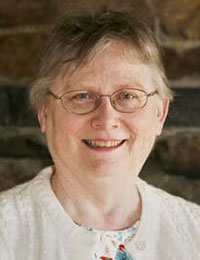 I am in the last phases of preparing eight new Early New England Families Study Project sketches for publication on americanancestors.org in the next week or so. I will give full details about each in an upcoming post.
I am in the last phases of preparing eight new Early New England Families Study Project sketches for publication on americanancestors.org in the next week or so. I will give full details about each in an upcoming post.
First, I have to create the indexes. Indexing a database for the NEHGS website involves a lot more than a simple name or place index. Using an Excel spreadsheet, there are nineteen fields of information to be entered for each record. Most are self-explanatory, but I have added a few notes for those that may not be: Continue reading Creating an index
Real photos
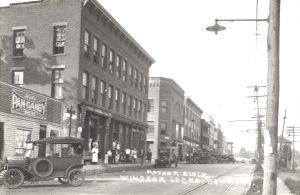 A few weeks ago, I went to one of the regular postcard shows that I frequent in the summer and came across a postcard that fills in a missing image in my family history. My entire postcard collection consists of images from Windsor Locks, Connecticut, where my Italian ancestors settled and lived for multiple generations. I have many of the mass-produced ones as well as some real photo postcards that show the flooding of the Connecticut River in 1936 and others showing houses that no longer stand. Continue reading Real photos
A few weeks ago, I went to one of the regular postcard shows that I frequent in the summer and came across a postcard that fills in a missing image in my family history. My entire postcard collection consists of images from Windsor Locks, Connecticut, where my Italian ancestors settled and lived for multiple generations. I have many of the mass-produced ones as well as some real photo postcards that show the flooding of the Connecticut River in 1936 and others showing houses that no longer stand. Continue reading Real photos
Remember the ladies

Over the years I have had the honor of corresponding with veterans from the Spanish-American War, World War I, and World War II. But I must admit that corresponding and talking with some of the last widows of the Civil War was a highlight as a historian. It is hard for some now to comprehend that a widow of the Civil War could be living nearly 150 years after the start of the war, early in the twenty-first century. However there have been other widows who married very young to older veterans from previous wars with quite similar stories. Continue reading Remember the ladies
A mappa mundi

The Society has, hanging on its walls, a reproduction of the famous thirteenth-century Hereford Mappa Mundi, the original of which is in the collection of Hereford Cathedral in the west of England. A mappa mundi – from Medieval Latin mappa (cloth or chart) and mundi (of the world) – is any medieval European map of the world. Approximately 1,100 of these maps are known to exist today, of which the Hereford Cathedral version is the largest. In fact, it’s the largest medieval map in the world. Continue reading A mappa mundi
A Midwestern femme fatale

We have a tendency to envision our ancestors as upstanding members of society. In some cases, they were. In others, they were anything but. I first stumbled across Belle Gunness while researching the Midwestern ancestry of a client, and I’ve been disgusted and oddly intrigued by her ever since.
Belle Poulsdatter was born circa 1860 in Norway. She emigrated to America and settled in Chicago, Illinois, where she married Mads Anton Sorenson in 1884. The couple had several children, two of whom died under unusual circumstances.[1] Then, Mads Sorenson died suddenly on 30 July 1900. Continue reading A Midwestern femme fatale
‘My ancestor the Indian Princess’
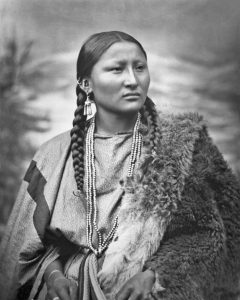
Many of us have family lore about an elusive Native ancestor somewhere far back on our family tree. Over the past year in Research Services we have received about a dozen formal requests to search for a Native ancestor and other inquiries over the phone. Often these requests are based on stories passed down through the generations or when DNA results display some Native American ancestry in an autosomal test.
As someone with a background in American Indian studies who has worked with Native nations in both New York and Arizona, I often struggle with how to respond to these inquiries in a meaningful way that is both respectful of living Native communities and to the individuals seeking information on whether or not their ancestors were a part of that history. Continue reading ‘My ancestor the Indian Princess’
Are we having fun yet?
 I am definitely regretting getting into the “ladies” sketches for the Early New England Families Study Project. While working on the sketch for William Lord of Saybrook, Connecticut, who had fifteen children by two wives, I recognized that his second wife also had at least one child by her first husband, John Brown of Swansea, which qualifies her for an Early New England Families sketch of her own. Continue reading Are we having fun yet?
I am definitely regretting getting into the “ladies” sketches for the Early New England Families Study Project. While working on the sketch for William Lord of Saybrook, Connecticut, who had fifteen children by two wives, I recognized that his second wife also had at least one child by her first husband, John Brown of Swansea, which qualifies her for an Early New England Families sketch of her own. Continue reading Are we having fun yet?
‘Supposed to be upright and prosperous’
[Author’s note: This series of excerpts from Regina Shober Gray’s diary began here.]
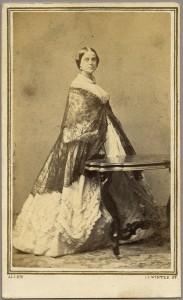
Hotel Victoria, Interlaken, Friday, 26 July 1878: A dull, rainy day in very small, incommodious rooms – Mary [Gray]’s especially gloomy – the poorest hotel for its pretensions we have been in. We left Giessbach[2] yesterday – a clouded sail on Brienzer-See[3] – and 10 minutes rail road ride brought us here. We left the Linzee party at Giessbach, and find the Curtises left their hotel here for Bern several days ago.
A most welcome lot of letters, at least 2 doz., awaited us here after our fortnight’s letter-famine – encouraging letters from Drs. Brown & Bethune[4] to our dear Dr. [Gray], also from F.C.G., E.G, & H.G.;[5] and to me from R.G.,[6] R.P.W.,[7] S.F.G.,[8] [and] P.M.C.[9] Continue reading ‘Supposed to be upright and prosperous’